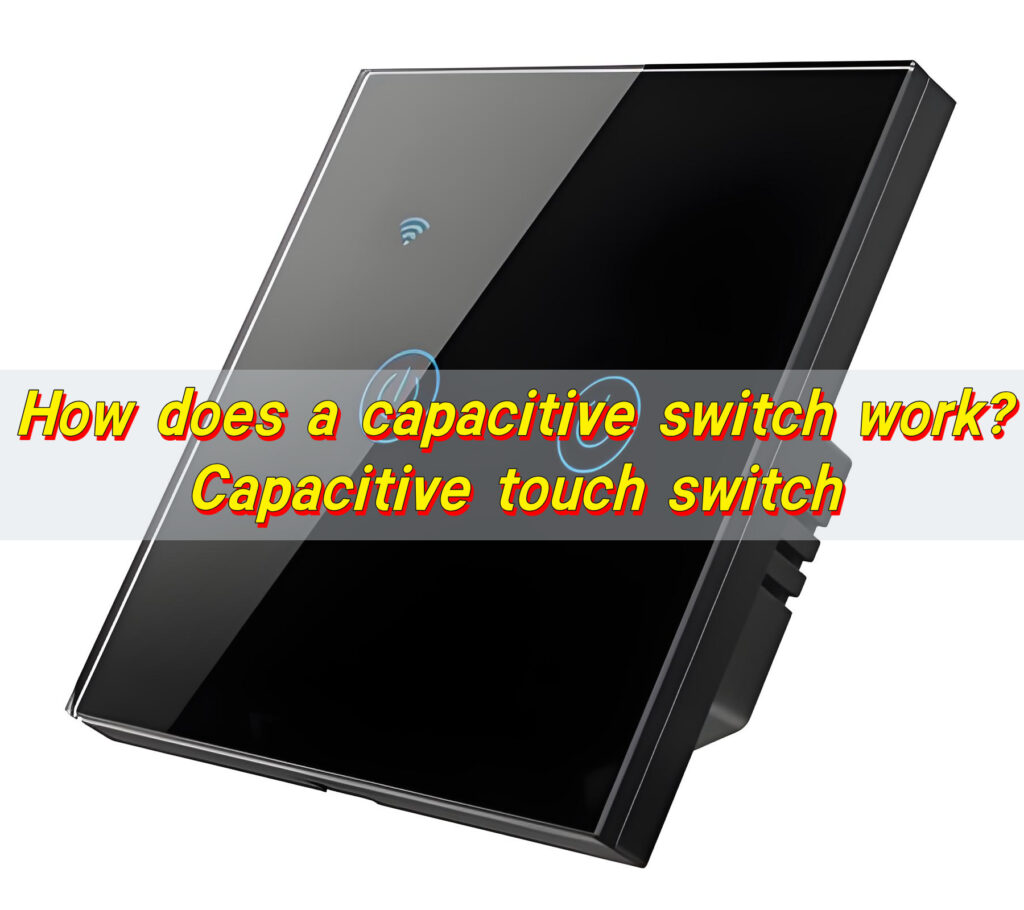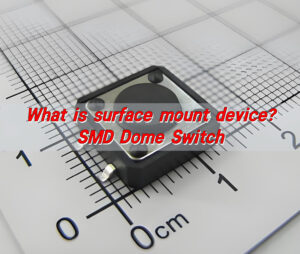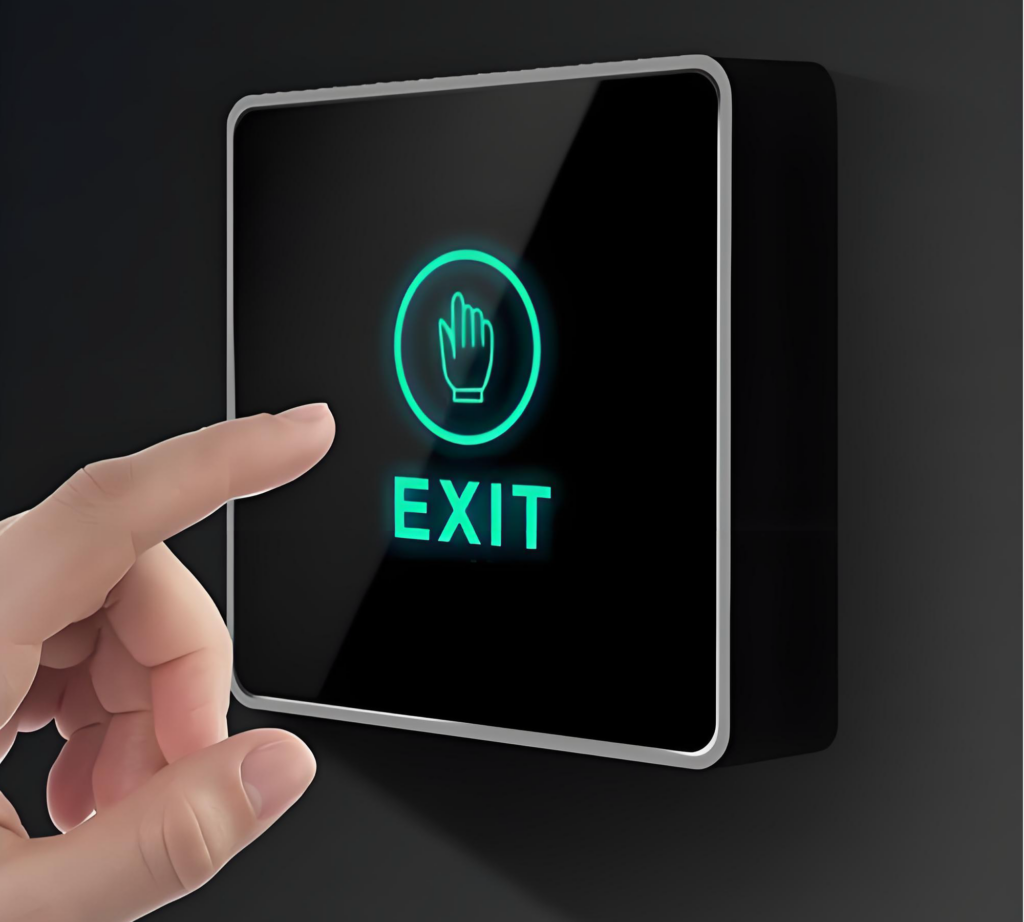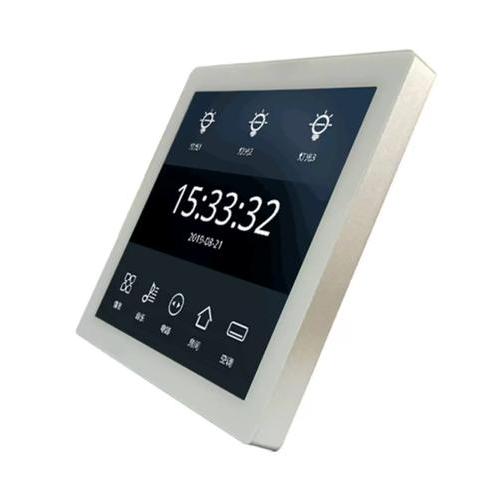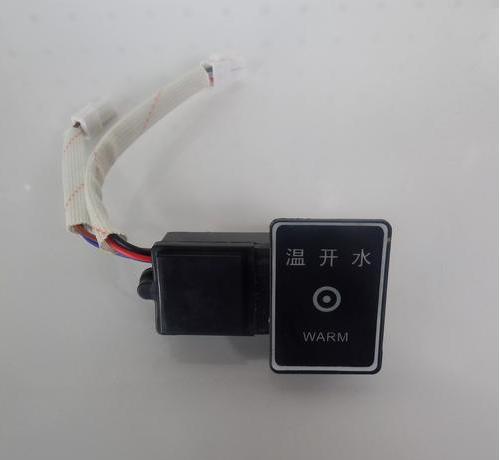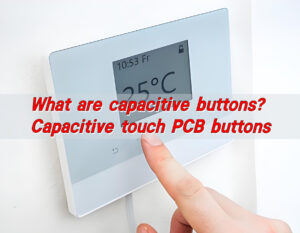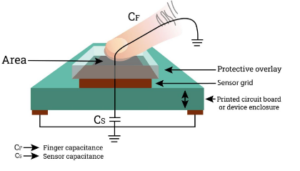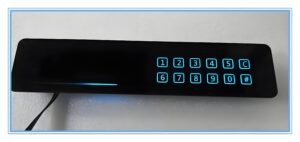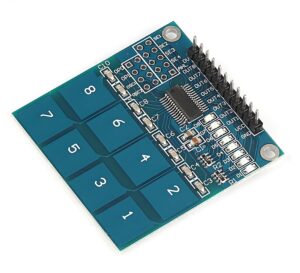Capacitive switch senses touch through tiny changes in an electric field. When your finger nears the surface, it alters the capacitance, and the circuit reacts instantly—activating the function without pressure or movement.
What Is a Capacitive Switch?
Capacitive switch is a type of touch-sensitive switch that detects the presence or movement of a finger or conductive object. Unlike mechanical switches that rely on physical contact to complete a circuit, a capacitive switch works through electrical properties—specifically, capacitance.
When you place your finger on or near the surface, the electrical field on the switch changes. This tiny change in capacitance is detected by the internal circuitry, which then triggers a signal—turning on a device, opening a menu, or activating a function.
Capacitive switches are found everywhere—from touch panels, control boards, industrial keypads, to consumer electronics. They offer a seamless, modern interface with minimal wear and tear, making them ideal for long-term use.
What Is a Capacitive Switch Keyboard?
A capacitive switch keyboard looks similar to a regular keyboard but functions differently. Instead of using physical contacts to register a keypress, it senses the electrical field changes caused by finger proximity.
Each key acts as a capacitive button with its own sensing pad beneath the surface. When a finger approaches the pad, the capacitance shifts, and the circuit registers a keystroke. This method ensures quick response, low noise, and minimal wear.
In many cases, the capacitive switch keyboard offers a smoother feel and longer lifespan compared to traditional mechanical keyboards. It’s especially popular in environments where precision, durability, and cleanliness matter—such as medical devices, control systems, and industrial equipment.
Unlike mechanical keyboards that use moving parts and springs, capacitive types rely on electrostatic capacitive switches. This design minimizes friction and eliminates contact bounce, resulting in faster and more accurate typing or input.
How Does a Capacitive Switch Work?
Capacitance is the ability of a system to store an electric charge between two conductive surfaces separated by an insulator.
In a capacitive switch, these conductive surfaces are typically a sensor pad on the circuit board and the user’s finger. The finger acts as a conductive object that disturbs the electrostatic field when it comes close to the pad.
When a user touches the panel or button:
- The finger introduces an extra capacitance into the circuit.
- The switch controller detects this change.
- The signal is processed to confirm a valid touch input.
- The circuit triggers the connected function—turning on a light, starting a motor, or performing a digital command.
The response is nearly instant. No force is needed, just proximity or a gentle touch.
Capacitive switches can be designed as self-capacitance or mutual-capacitance systems. Self-capacitance detects a single touch on one pad. Mutual-capacitance measures interactions between multiple electrodes, allowing multi-touch detection and gestures.
How Does a Capacitive Touch Switch Circuit Detect Touch?
The capacitive touch switch circuit is a combination of sensing pads, resistors, and a controller IC. It operates on the principle that the human body holds an electric charge.
When the circuit is powered, it continuously monitors the capacitance value of each sensing pad. Under normal conditions, the capacitance remains constant. However, when a finger nears the pad, it adds a small capacitance.
The controller senses this change and triggers an output signal. This could be to toggle an LED, control a relay, or send data to a microcontroller.
Many modern capacitive touch switch circuits use advanced chips that can auto-calibrate and adjust sensitivity, preventing false touches from moisture or environmental noise.
What Is a Capacitive Button Used For?
A capacitive button can replace nearly any mechanical button in today’s devices. Its design fits well in sleek, flat panels that need a clean appearance and high durability.
Common applications include:
- Home appliances (microwaves, washing machines, air purifiers)
- Lighting control panels
- Industrial control systems
- Automotive dashboards
- Consumer electronics like smartphones or audio devices
Capacitive buttons enhance usability and reduce mechanical fatigue. They are easy to clean, sealed against dust and moisture, and have no moving parts to break.
In modern product design, capacitive buttons are not only functional—they add aesthetic value. Smooth glass or plastic surfaces can integrate beautifully with LED backlighting or graphics, enhancing both form and function.
How Is a Capacitive Switch Board Made?
A capacitive switch board or capacitive switch PCB is carefully engineered to ensure accurate and stable touch detection.
Here’s how it’s typically made:
- Design Phase: The designer defines the layout of touch pads and routing. The pad shapes, sizes, and distances affect sensitivity and response speed.
- Material Selection: The PCB is usually made from FR4 or PET material. A thin overlay, such as glass, polycarbonate, or flexible plastic, covers the surface to protect the sensor pads.
- Circuit Patterning: Copper traces form the electrodes on the board. The thickness and shape of these traces help control the sensitivity.
- Controller Integration: The capacitive sensing IC is connected to the pads to detect any changes in capacitance.
- Finishing: Protective coatings and insulation layers are added. Graphics or labels may also be printed for user guidance.
- Testing: Each board undergoes sensitivity calibration and functionality tests to ensure stable performance.
Modern capacitive switch boards are designed to handle temperature changes, humidity, and electrical noise. They are durable, flexible, and easy to integrate into existing control systems.
Why Choose a Capacitive Switch Circuit Over a Mechanical One?
Capacitive switch circuits offer several advantages that make them superior to traditional mechanical switches in many cases.
- Durability: No moving parts mean minimal wear. These switches can last for millions of actuations without losing sensitivity.
- Aesthetics: The smooth, flat design fits modern products perfectly. It allows for backlighting, customizable icons, and branding.
- Cleanliness: Because there are no openings or crevices, capacitive switches are easy to clean and resistant to dust and water.
- Sensitivity: They respond instantly to a light touch, offering a more intuitive experience.
- Reliability: Fewer mechanical failures occur since the entire operation depends on electrical sensing.
- Design Freedom: Manufacturers can design any button shape, layout, or material overlay without compromising performance.
In contrast, mechanical switches can degrade over time due to contact wear, bouncing, or oxidation. They also produce audible clicks and need more force to operate.
How Does an Electrostatic Capacitive Switch Sense Touch?
An electrostatic capacitive switch works on the same principle as any capacitive switch, but it’s highly tuned for precision sensing. It detects the minute change in electric field caused by a conductive object, typically a human finger.
Here’s how it works in practice:
- The switch constantly emits a weak electrostatic field from the sensor pad.
- When a finger nears, it disrupts this field.
- The controller measures the difference between the expected and actual capacitance values.
- When the difference exceeds a set threshold, it recognizes a valid touch.
This process happens in microseconds, creating a nearly instant response. The sensitivity can be adjusted to detect touches even through thin glass or plastic layers, allowing beautiful, sealed designs without performance loss.
They are also less likely to wear out since there are no moving contacts. In environments that demand long life and reliability, such as automotive control panels or medical equipment, this feature is invaluable.
Conclusion:
Capacitive switches are a durable and elegant solution for interface design. Whether it’s a capacitive touch switch circuit, a capacitive switch keyboard, or a capacitive touch light switch, the core principle remains the same: detecting capacitance changes to deliver smooth, accurate control.
These switches offer unmatched durability, aesthetics, and reliability compared to mechanical options. They are now central to countless applications—from smart home systems to industrial machinery and consumer gadgets.


